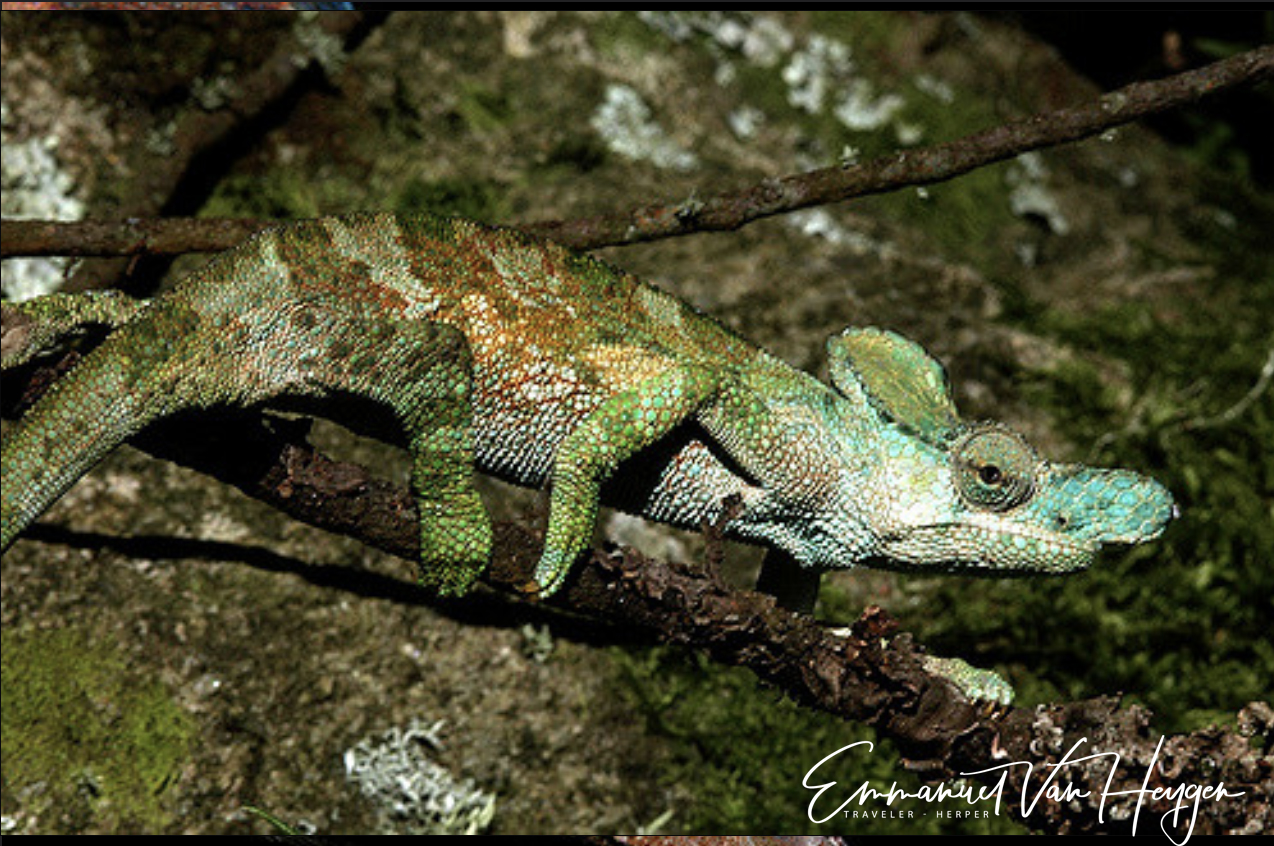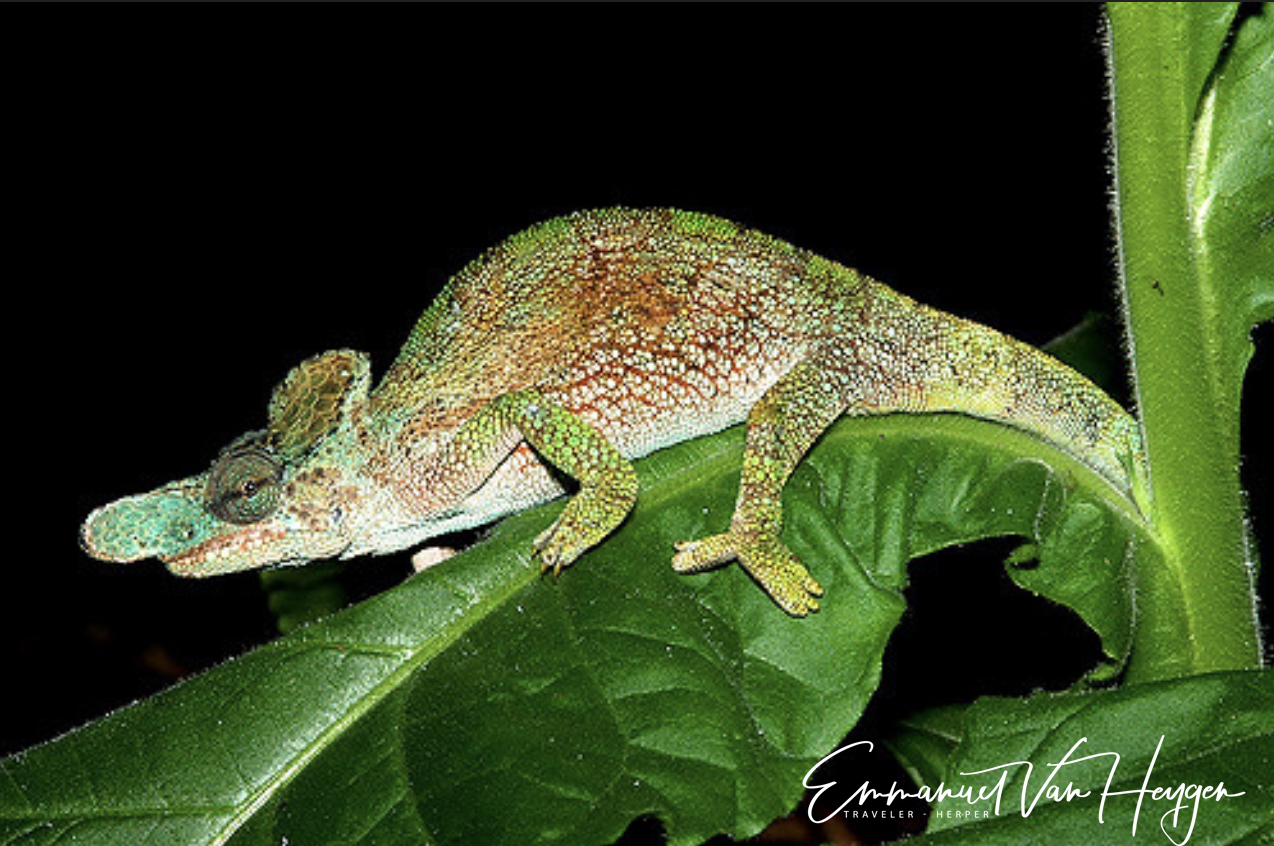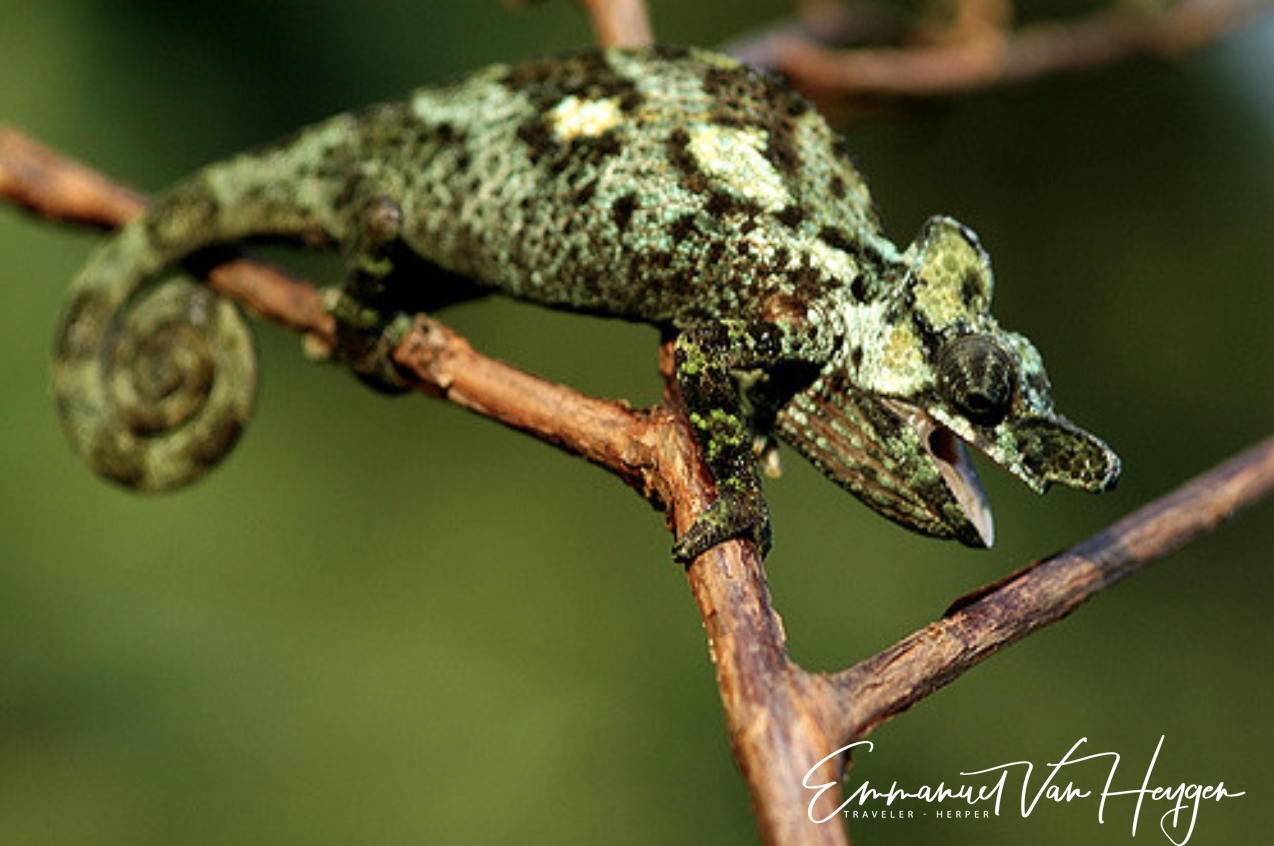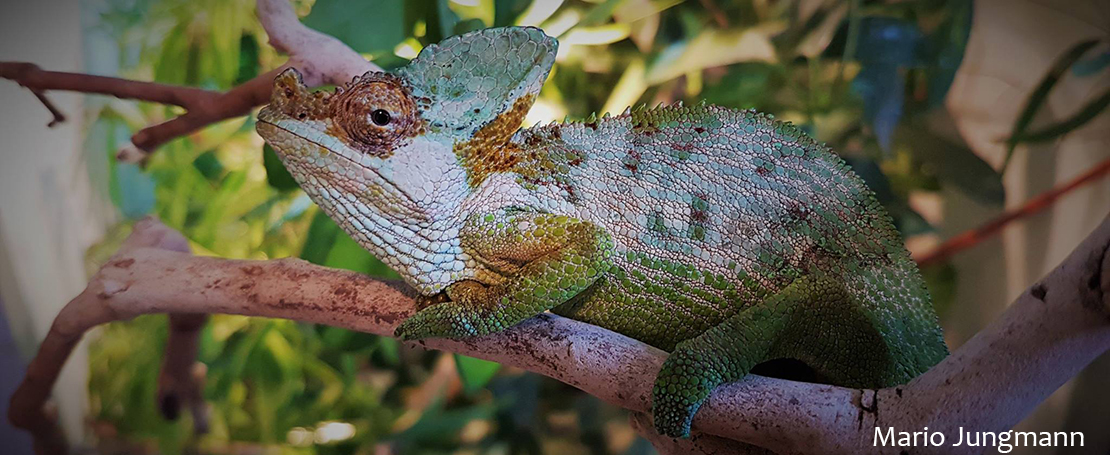
Banner image courtesy of Mario Jungmann
Natural History
Starting at about 1200 meters in elevation and up to 2600 meters in the Rwenzori Mountains of Uganda we find Kinyongia xenorhina. The common name, “Strange-nosed Chameleon” is a direct interpretation of its Latin name. This is a rarely seen chameleon and has been imported only a handful of times.
Kinyongia xenohrina lives in the same areas as Kinyongia carpenteri and their females look almost identical. The males, though, are easy to tell apart. Male K. xenorhina has a prominent paddle nose, while K. carpenteri has a casque and short upturned nose.
K. xenorhina is an incredibly shy species and a candidate only for the chameleon keeper most dedicated to the chameleon’s need for privacy over the keeper’s desire for interaction.

Jurgen Van Overbeke gives us an introduction to Kinyongia xenorhina in the wild.
Listen to Jurgen introduce us to Kinyongia xenorhina
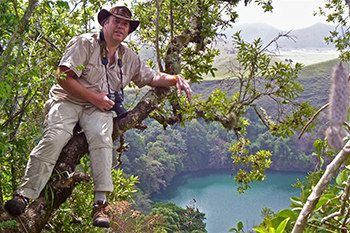
Emmanuel Van Huygen viewing Lac Manemgouba in Cameroon
Emmanuel Van Hyugen has pursued his love for reptiles around the world. He has led a number of expeditions through his company, Exo-Terra, to prime chameleon habitats. In 2005, his expedition to Uganda visited the Rwenzori mountains where he was able to capture images of Kinyongia xenorhina that is graciously sharing here.
Captive Husbandry
Jurgen Van Overbeke is a chameleon breeder in Belgium who has extensive experience with a wide range of chameleon species. He has kept Kinyongia xenorhina and has been closely involved with successful breeders. He has compiled the care experiences and shares the combined experiences with us.
“Kinyongia xenorhina is very rare. The shyness of this species makes it even more difficult to establish in captivity as only the males tend to make themselves known to establish territory. The females quickly engage in their defense of dropping to the ground and scurrying off. Therefore, the males are more likely to be found. In fact, in a shipment of 30 individual, 28 of them were male.
The two females were successfully bred, though.
General husbandry is to give them an extremely densely planted cage area for privacy. Once you have filled your cage with plants you can then block off the sides of the cage with opaque panels. You can then view them through a peep hole for check-ups.
The mountain tops of the Rwenzori mountains that K. xenorhina comes from are often cloaked in clouds and we want to create that situation in captivity. Hydration is very important. For hydration I give them a fogger for three hours before the lights go on in the morning. I then do a 15 minute misting in the morning and in the afternoon to ensure they have the water they need.
They were comfortable in an ambient temperature around 19C(high 60sF) and, in the summers when it got upwards of 35C, I had to move them into my cool basement.
I provide them with natural unfiltered sunlight during the summer until it is too hot and then a T8 Reptisun 5.0 during the indoor periods. They are sensitive to supplementation so I give calcium once per week during summer and calcium with vitamin D3 once per week in winter.
Gestation is two months and incubation is 12-13 months in the high 60s F temperature. Small females will lay 3-4 eggs while older females can lay around 9 eggs. They can lay three to four clutches year.
K. xenorhina is recommended for only experts – not just experienced. But set up and cared for correctly, they are strong chameleons.”
The images below are graciously provided by Christian Kaul who was one of the successful breeders that Jurgen consulted with on the breeding information provided here.
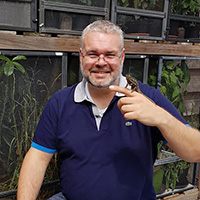
Listen to Mario give an introduction to K. carpenteri husbandry




